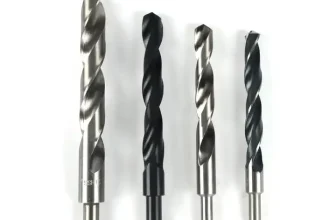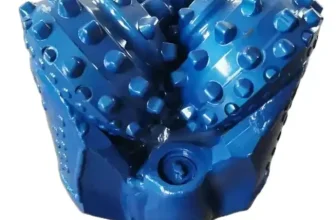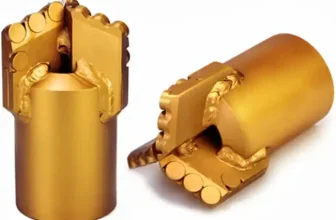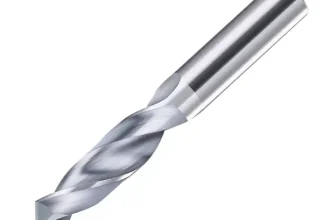Spot drilling is a precision technique used in machining and
woodworking, where a tool known as a spot drill is utilized to form an
indentation or a ‘spot’ on the workpiece. This spot serves as a guide or
a ‘pilot’ for subsequent drilling processes. It marks the exact location
where a hole needs to be drilled, thus serving as a crucial first step
in accurate and precise hole-drilling operations. This indentation
proves essential for any operation that demands a high degree of
accuracy, as it ensures that the main drill does not wander or drift
from the desired drilling location. Thus, spot drilling holds a
significant place in precision mechanical tasks, setting the stage for
efficient and effective drilling processes.
Importance of
Spot Drilling in Precision tasks
Spot drilling ascertains the highest level of accuracy in precision
tasks. By generating a shallow indentation, referred as ‘spot’, it
guides subsequent drill operations. The resultant positioning helps in
achieving a degree of precision that might be impossible otherwise. This
is incredibly beneficial in tasks where the slightest errors in hole
alignment can disrupt the entire assembly or application. The
preciseness induced by spot drilling is not just crucial but also
indispensable in fields such as engineering and manufacturing where the
margin for error is close to nil. In a way, the utility of spot drilling
extends to ensuring the effectiveness and quality of finished
products.
Detailed Description of Spot
Drill
Design and
Characteristics of Spot Drills
Spot drills are specifically designed to be sturdy and precise.
Compact in size, they are usually shorter than other types of drills, a
feature that greatly contributes to their stability and accuracy. Their
distinctive design consists of two primary features: the body and the
tip.
The body of the spot drill, also known as the shank, is the part that
fits into the drill chuck. It can come in different sizes to fit various
machines, but all shanks share a common characteristic – they are
straight and sleek, designed for easy insertion and removal from the
drill chuck.
The tip, or the cutting edge of the spot drill, is arguably the most
crucial part. Unlike regular drill bits that have a pointy end, spot
drills have a broader tip which is usually flat or slightly conical. The
angle of the tip, often referred to as the “drill point angle,”
significantly influences the drilling result. Common drill point angles
range from 90 to 120 degrees. The 90-degree angle suits applications
requiring good centring, whilst the 120-degree angle is ideal for
materials that are harder to drill.
Both the body and the tip work in harmony to deliver clean, accurate,
and reliable performance. The tip cuts through the material, while the
body ensures the drill stays stable, enabling the creation of precise
spots. This cooperation between the two parts is what provides spot
drills with unsurpassed accuracy, making them a favourite amongst
professionals who require high levels of precision.
Different materials of Spot
Drills
High-speed Steel Spot Drills
High-speed steel (HSS) is among the popular materials used in the
construction of spot drills, and for good reasons. HSS spot drills offer
a cost-effective solution for those requiring precision at a
budget-friendly price point.
High-speed steel is a subtype of tool steel characterized by its
ability to withstand high temperatures without losing its hardness. This
alloy combines elements such as tungsten, molybdenum, chromium, and
vanadium, which grant it a high resistance to heat generated during
drilling operations, making them optimal for extended use.
HSS spot drills are versatile, giving them the ability to cut through
a wide array of materials, including metals and plastics. They are
renowned for their durability, making them able to endure several
sharpens over their lifespan. This is beneficial as it helps maintain
the drill’s accuracy and prevents undue wear and tear. This longevity
combined with their lower cost makes high-speed steel spot drills a
popular choice amongst craftspersons.
Despite their durability, however, HSS spot drills are not as hard as
some other spot drill materials, such as carbide. As such, they may not
be the best choice for drilling through extremely hard materials or for
tasks that require ultra-high precision. But for many common spot
drilling applications, high-speed steel spot drills offer a compelling
balance of cost and capability.
Carbide Spot Drills
Carbide spot drills are unique in that they are made from a compound
that includes carbon and another element, typically tungsten. Also known
as tungsten carbide spot drills, they are renowned for their exceptional
hardness, durability, and resistance to heat, surpassing that of
high-speed steel drills. Carbide, often with a coating for added
durability, is perfect for dealing with hard-to-machine materials like
stainless steel and titanium.
Characterized by their rigid structure and abrasion resistance,
carbide spot drills can maintain high-speed operations for extended
periods without significant wear. Because of carbide’s capability to
handle high temperatures, these drills can work at a high feed rate
without the risk of deforming or compromising the tool’s integrity. This
makes carbide spot drills a popular choice in industries that require
rigorous drilling tasks with minimal downtime.
However, the hardness that defines carbide spot drills can also be a
limitation. These drills are more brittle than their high-speed steel
counterparts and are, therefore, more susceptible to chipping or
breaking under certain conditions. It is crucial that the workpiece is
properly secure to minimize tool breakage, and coolant often needs to be
used due to the increased heat generated.
Carbide spot drills may have a higher initial cost compared to other
drill materials, but their long lifespan and consistent performance
often justify this investment, especially in high-production settings
where reducing tool changeovers can significantly enhance
productivity.
Understanding the
Function of Spot Drill
Process of Spot Drilling
The process of spot drilling begins by selecting the right spot drill
bit for the task at hand. This requires choosing a bit made from a
suitable material and, more importantly, one with an appropriate point
angle. The point angle of the spot drill should match the ones on the
drill bits that will be subsequently used.
Once the spot drill is chosen, it is mounted onto the drill press or
the chuck of the power drill. The workpiece is then securely positioned
onto the drill press table or held in place using a clamp.
Spot drilling itself is the first step in the drilling process. The
spot drill bit is lowered onto the surface of the workpiece, creating a
small divot or indentation, which is generally shallow and wide. The
indentation made by the spot drill will guide the following drill bits,
ensuring they do not wander from the targeted drilling location.
Control and accuracy are of utmost importance during the spot
drilling process. It’s crucial to maintain a steady hand and prevent the
drill from wobbling or moving off-center from the designated spot. A
controlled pace should also be observed when pressing the bit into the
material to avoid cracking or damaging the workpiece.
After the spot drilling process is completed, the spot drill bit is
replaced with the actual drill bit intended to produce the deeper and
typically narrower hole. Due to the ‘spot’ created by the spot drill,
you will find that the subsequent drill bits can begin their work more
accurately, resulting in precisely placed holes.
The spot drilling process, when executed correctly, creates an
essential foundation for precision drilling tasks, offering guideline
divots for all subsequent drilling processes.
Role in Creating Pilot Holes
A pivotal function of a spot drill is the creation of pilot holes, a
term that refers to a small hole drilled as a guide for the insertion of
a larger drill. The spot drill, due to its design and geometry, is the
perfect tool for this task. When creating a pilot hole, the spot drill
is applied to the workpiece to create a shallow, accurate indentation.
This indentation serves as the guide or starting point for the
succeeding drill.
By utilizing the spot drill before a twist drill, for example, it
ensures that the larger bit has a precise path to follow. Without this
pilot hole, the second drill can “walk” or move away from the desired
location, especially on curved or angled surfaces, leading to
inaccuracies in the finished product.
Furthermore, by easing the initial drilling burden on the larger
drill bit through the creation of a pilot hole, it can extend the
lifespan of the bit and enhance the overall efficiency of the drilling
process. Thus, the spot drill in crafting pilot holes plays a crucial
role in maintaining precision throughout the drilling project.
Advantages of Spot Drilling
Increases Drilling Accuracy
Spot drilling is widely recognized for its ability to substantially
increase drilling accuracy. The central purpose of a spot drill is to
create a small divot that guides subsequent drill bits. This divotation
ensures that drill bits start in exactly the right place, reducing the
likelihood of slip-offs and drilling inaccuracies. This ensures a
precision starting point for all successive drilling processes.
Moreover, spot drills are typically made of harder materials than
regular drill bits, which allows them to resist the forces exerted on
them during the drilling process. As a result, they remain stable,
aiding in maintaining the exactness of the drilling process. So, if
optimum precision and accuracy are required in operations, the inclusion
of spot drilling in the workflow can offer significant advantages. This
enhancement of drilling accuracy is crucial, especially in precision
tasks, ensuring superior results every time.
Prevents Drift
Spot drilling serves a vital role in preventing drill drift. Drill
drift, or the tendency of a drill to wander from the intended path, is a
common occurrence in many machining operations and can lead to
inaccuracies and flaws in the final product. This is especially true
when drill bits encounter hard or uneven surfaces. By creating an
initial impression or ‘spot’ on the surface, spot drills provide an
effective solution to this issue.
The small diameter and rigid structure of a spot drill ensures that
it is stable and can accurately create a starting point for the ensuing
longer drill. This starting hole, or ‘spot’, effectively guides the
longer drill, alleviating the chances of it drifting away from the
target area.
In essence, the spot drill functions as a type of guide or ‘pilot’,
ensuring that the longer drill follows a predetermined path and remains
accurate and true to its course. This aspect of spot drilling not only
increases accuracy but also significantly enhances the overall quality
of the drilling process, making it an indispensable tool in precision
tasks.
Enhances Lifespan of the
Drill Bit
Spot drilling also significantly contributes to enhancing the
lifespan of drill bits. This is largely due to the accurate guiding role
it plays in the drilling process. By creating a shallow and precise
depression, the spot drill reduces the workload of the subsequent
drills. With a guide hole already in place, the main drill bit doesn’t
have to deal with lateral forces that can cause it to bend, warp or even
break. Additionally, it prevents the wearing down of the drill bits
caused by the ‘walking’ effect. Consequently, this implies that less
stress is put on drill bits, which in turn leads to a lower rate of wear
and tear, thus extending their longevity. This not only enhances
efficiency in work but also scores highly in terms of cost-effectiveness
as the need for frequent replacements of worn-out drill bits is
minimized.
Applications of Spot
Drilling
Use in Metalworking
Spot drilling serves a pivotal role in metalworking, especially when
precision is a high priority. It is commonly utilized at the initial
stage of drilling operations in this industry. Here, the spot drill
creates an indentation or a “spot” that guides subsequent drilling
tools. This is especially critical when working with metals as they are
hard substances, and any error in drilling can result in costly or even
dangerous mistakes.
Moreover, spot drilling is invaluable in metalworking when creating
holes of specific orientations on curved or complex surfaces where
traditional drills may simply skid off. Its unique design allows it to
‘stick’ to the metal surface, creating a small indentation that other
drills can follow with high precision.
Furthermore, in metalworking operations like countersinking or
counterboring, the spot drill’s conical design becomes essential. It
ensures a perfect conical ‘spot’ that matches the angled tip of a screw
or bolt. As such, spot drills are vital in the manufacture of a vast
range of metal products, from large-scale construction equipment to the
precision requirements of aeronautical parts.
Finally, spot drills made from tough materials like carbide are
perfect for metalworking, as they can withstand the hardness of the
metal without wearing out quickly. They serve as a central tool in the
arsenal of any metalworker or machinist, offering accuracy, consistency,
and efficiency in operations.
Use in Woodworking
Spot drilling serves an essential role in the world of woodworking.
Any expert in the field will disclose how spot drilling simplifies
intricate wood operations, ensuring the success and accuracy of the
entire wood drilling process.
Spot drills help eliminate common issues faced during woodworking
drill operations, such as the misalignment of holes or the wandering of
a conventional drill bit on the wooden surface. The drill bit is steered
in the right direction, creating an accurate guide for a subsequent,
larger-sized drill. The impeccably accurate holes that spot drilling
provides are crucial in woodworking tasks like furniture making, cabinet
installations, or any form of wood crafting requiring precise
drilling.
Moreover, the sharp angles of a spot drill bit are impeccable for
counter-sinking screw holes in woodworking projects. This technique lets
the screw head sit flush with or beneath the surface of the wood,
resulting in a neat and professional finish.
Furthermore, the spot drilling process confirms the reduction of
splintering or tear-out on the wood’s surface. By ensuring that the
drill enters the wood in a controlled and gentle manner, a clean entry
and exit hole is guaranteed, maintaining the aesthetics and integrity of
the wood.
At its core, spot drilling elevates the quality of woodworking,
offering a blend of precision, neatness, and professional finish. From
furniture creation, home-building to intricate wood crafts, spot drills
make the demanding task of working with wood a tad bit easier and much
more precise.
Other Practical Applications
Beyond the realms of woodworking and metalworking, spot drills have a
myriad of other practical applications. They are a trusted tool used in
a variety of industries where precise hole placement and drilling
accuracy are paramount.
In the construction industry, spot drills are frequently used to
prepare for the drilling of deep holes into surfaces like concrete or
masonry. Such holes might be needed for installing bolts, screws, or
anchors which require precise placement to uphold the integrity of the
structure.
Spot drills are also widely used in the automotive industry to assist
in assembling car parts. For instance, when installing a new engine part
or repairing a worn-out one, a spot drill is often utilized to start
holes that would later be drilled to a larger diameter, thus ensuring
the hole is accurately located and helping to align the parts
correctly.
In the electronics industry, where miniaturization is the norm, spot
drills come in handy when making circuit boards. Here, they’re used to
make accurately placed pilot holes for the small components that need to
be inserted onto the board.
Finally, spot drilling has also found applications in the jewelry
industry. Jewelers often need to drill small, precise holes in precious
metals and gems. A spot drill allows them to make an initial divot to
guide their miniature drill bits, thus preventing any disastrous slips
that could ruin their intricate designs.
Therefore, spot drills contribute significantly to various industries
– from construction to electronics, from automotive to jewelry. Their
versatility and precision have made them integral in diverse fields.
Conclusion
Recap of
the importance and functions of Spot Drilling
Spot drilling indisputably serves a crucial role in precision
drilling. Incorporating this practice can significantly alter the
quality and accuracy of drilling work. Spot drills excel in creating a
spot or depression in workpieces, which becomes the guide for
subsequent, deeper drilling procedures. Their unique design and hardy
construction materials, like high-speed steel and carbide, make them
capable of penetrating various surfaces smoothly without deviating from
the target, thus increasing the overall precision.
In addition, spot drilling is widely acknowledged for extending the
life of drill bits. By providing an appropriate starting point for the
main drill bit, it reduces the potential for bit wandering or breakage.
Consequently, it decreases tool damage and boosts the overall
productivity and efficiency of drilling tasks.
From metalworking to fine woodworking and numerous other industries
requiring precise and accurate drilling, the influence and utility of
spot drilling are apparent. Despite their often overlooked status, spot
drills are true unsung heroes in precision tasks. They are integral
tools that significantly contribute to the efficiency of manufacturing
and crafting processes, reinforcing their importance in both
professional and hobbyist settings.
Final
Thoughts on the Dominant Role Spot Drills Play in Precision
Drilling
Spot drills undoubtedly play an overriding role in precision
drilling. They exemplify a quintessential blend of functionality and
design, forging a tool that is not only efficient but also remarkably
accurate. Their unique characteristics render them invaluable,
especially when it comes to meticulous tasks that demand high
precision.
Their designs, which range from high-speed steel to carbide, cater to
a multitude of applications, be it in metalworking, woodworking or other
practical uses. The fact that they can ensure uniformity of holes,
increase the lifespan of the drill bit and more importantly, preclude
any drill bit deviation underscores their dominant role in precision
drilling.
In the journey of transforming a solid piece into a masterpiece, spot
drills are the first step, setting the tone for the rest of the process.
Every successful drilling operation, every precise hole, traces back to
a spot drill, marking out its beginning. Through increased accuracy and
precision, spot drills illuminate the path for other drilling tools,
ensuring the end-result is nothing short of perfection.
As the world continues to evolve and industries strive for greater
precision and efficiency, the prominence and role of spot drills will
only burgeon. It wouldn’t be an overstatement to say that in the realm
of precision drilling, spot drills are truly, the unsung heroes.







